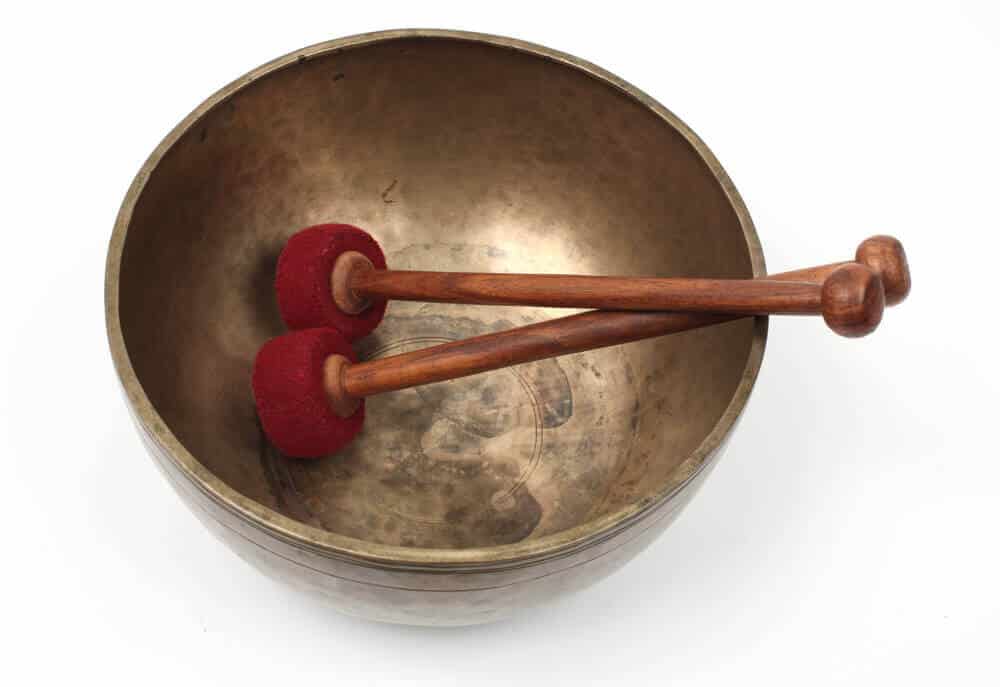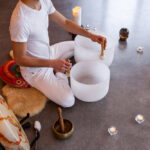Singing bowls have been a part of history in spiritual and healing practices as they produce a soothing sound that can balance a person. However, to create the perfect sound, you need the proper singing bowl striker mallet, and each type of singing bowl mallet produces a unique sound to create different moods and atmospheres.
Types of Singing Bowl Mallets
Felt Mallets
The most common type of mallet is the felt mallet. It is made of wool or synthetic felt and produces a soft, warm sound. The felt mallet for is ideal for beginners and those who want a gentle, calming sound. Felt mallets are the most common type used with singing bowls and are available in various sizes and densities. The softer the felt, the warmer the tone produced by the mallet.
Wooden Mallets
Another type of mallet is the wooden mallet. It is made of hardwood and produces a brighter, clear tone, giving a more vibrant sound. The wooden mallet for a singing bowl is perfect for those who want a more energetic and lively sound from their singing bowl. Wooden mallets are ideal for playing larger singing bowls, as they produce a louder and more sustained sound than felt mallets.
Leather Mallets
Lastly, the leather mallet is ideal for larger singing bowls as they can create a deep, resonant tone. Leather mallets produce a tone similar to wooden mallets but with a warmer, mellow sound.
Specialty Singing Bowl Mallets
Rubber Mallets
Rubber mallets are an excellent choice for those who want a softer sound from their singing bowl. Mallets with a rubber head create a warm, mellow tone and are perfect for those new to singing bowls and experimenting with different sounds. Rubber mallets are also a good choice for those who have smaller bowls or who want to create a more subtle sound.
One of the benefits of using a rubber mallet is that it is less likely to damage the bowl. The soft rubber head is gentle on the bowl’s surface and won’t cause any scratches or dents.
Wand Mallets
Wand mallets are another type of specialty mallet that is popular among singing bowl enthusiasts. These mallets have a long, thin handle and a small, hard head. The shape of the wand mallet allows for more precision when playing the bowl, making it easier to create specific sounds and tones.
Wand mallets are for more advanced techniques, such as playing the bowl’s rim or creating a sustained tone, and are also a good option for those who have larger bowls and want to create a more powerful sound.
Double Ended Singing Bowl Mallets
Double ended mallets are a versatile option for those who want to experiment with different sounds and techniques. These mallets have a soft head on one end and a hard head on the other to create a wide range of tones and textures.
Double ended mallets are a good choice for those who want to play their bowl differently, such as striking the bowl with the hard end and then using the soft end to create a sustained tone. They are also a good option for those who have multiple bowls and want to experiment with different sounds on each one.
Singing Bowl Mallet Table
| FEATURE | FELT MALLET | WOOD MALLET | LEATHER MALLET | RUBBER MALLET | WAND & DOUBLE ENDED MALLET |
|---|---|---|---|---|---|
| Material | Felt | Wood | Leather | Rubber | Wood or metal |
| Sound | Softer, more muted sound | Harder, more pronounced sound | Harder, more pronounced sound | Harder, more pronounced sound | Varies depending on wand material |
| Durability | Less durable, can wear down quickly with frequent use | More durable, can withstand frequent use | More durable, can withstand frequent use | More durable, can withstand frequent use | Varies depending on wand material |
| Grip | Softer grip, easier to hold | Harder grip, may require more effort to hold | Softer grip, easier to hold | Harder grip, may require more effort to hold | Varies depending on wand material |
| Size | Available in various sizes, from small to large | Available in various sizes, from small to large | Available in various sizes, from small to large | Available in various sizes, from small to large | Varies depending on wand material |
| Weight | Lighter weight, easier to control | Heavier weight, requires more control | Heavier weight, requires more control | Heavier weight, requires more control | Varies depending on wand material |
| Accessories | Often sold with singing bowls | Often sold with singing bowls | Often sold with singing bowls | Often sold with singing bowls | Often used with singing bowl wands |
| Price | Generally less expensive | Varies depending on wood type and quality | Varies depending on leather type and quality | Varies depending on rubber type and quality | Varies depending on wand material |
I personaly like a rubber or leather mallet as I find that there is not the sub scratch of the mallet on the singing bowl whether crystal or metal. Here are our top 3 choices of mallets.
Factors to Consider When Choosing A Singing Bowl Mallet
When choosing a singing bowl mallet, consider the size and type of the singing bowl the mallet will be striking. A larger bowl will require a larger mallet, while a smaller bowl will require a smaller mallet. The size and weight of the mallet, the material and texture, and the sound quality are all crucial factors to consider.
Size and Weight
The size and weight of the mallet can significantly affect the sound of the singing bowl. A larger and heavier mallet will produce a louder and deeper sound, while a smaller and lighter mallet will produce a softer and higher-pitched sound. You want to avoid using a large mallet on a thin singing bowl, so choose one appropriate for the size and thickness of the singing bowl.
Material and Texture
The material and texture of the mallet can also affect the sound of the singing bowl. Mallets made from different materials, such as wood, leather, or felt, can produce different tones and textures. The texture of the mallet can also affect the sound by creating more or less friction when striking the bowl affecting the sound quality and clarity.
Sound Quality
The sound quality of the singing bowl mallet is the most important factor to consider. The mallet must produce a clear and resonant sound in harmony with the singing bowl. The sound must be consistent and free from unwanted vibrations or overtones, so test the mallet with the singing bowl to ensure that it produces the desired sound.
Our guide Sound Healing: A Guide to the Benefits and Techniques explores the benefits in further detail.
Final Thoughts
Choosing the proper singing bowl mallet is essential to create your desired sound and atmosphere, and the type of mallet you choose will depend on the kind of singing bowl you have and the sound you want to create. With the right singing bowl mallet, you can create a soothing and harmonious atmosphere that promotes relaxation and health.









